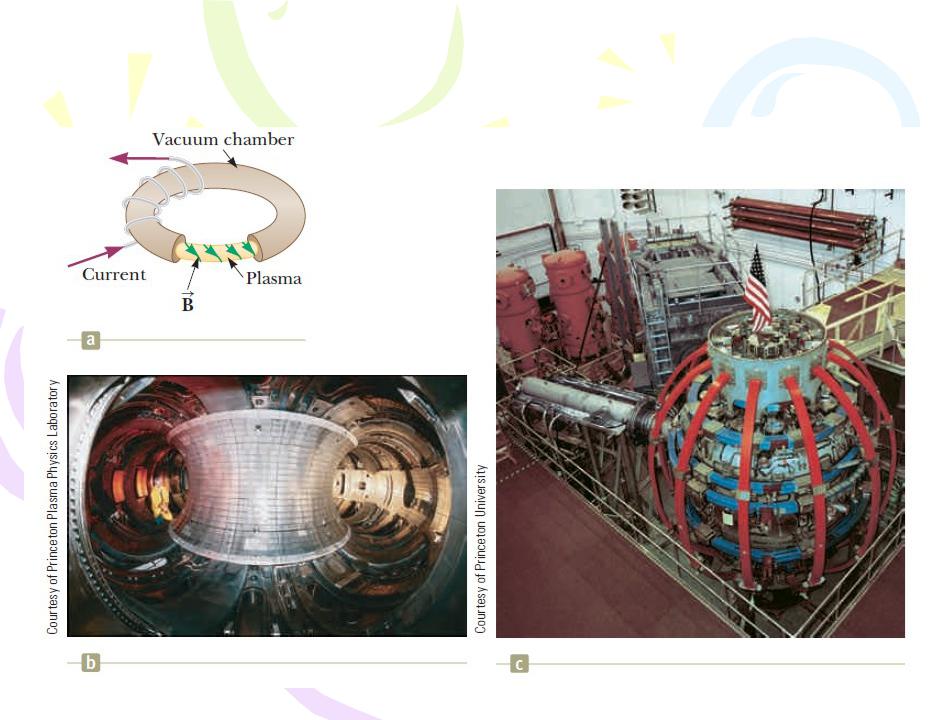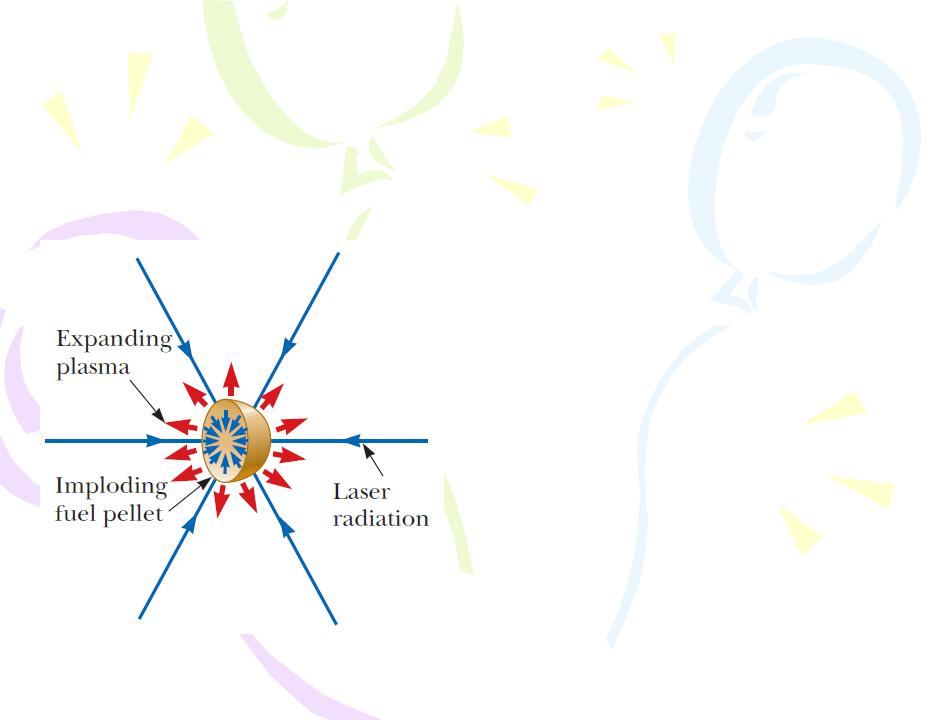
- •Course of lectures «Contemporary Physics: Part2»
- •Interactions Involving Neutrons
- •Interactions Involving Neutrons
- •Nuclear Fission
- •Nuclear Fission
- •Nuclear Fission
- •Nuclear Reactors
- •Nuclear Reactors
- •Nuclear Reactors
- •Nuclear Reactors
- •Nuclear Fusion
- •Nuclear Fusion
- •Nuclear Fusion
- •Nuclear Fusion
- •Nuclear Fusion
- •Nuclear Fusion
- •Nuclear Fusion
- •Nuclear Fusion
- •Nuclear Fusion
- •Nuclear Fusion
- •Nuclear Fusion
- •Nuclear Fusion
- •Radiation Detectors
- •Radiation Detectors
- •Radiation Detectors
- •Radiation Detectors
- •Uses of Radiation
- •Uses of Radiation
- •Uses of Radiation
- •Uses of Radiation

Nuclear Fusion
Terrestrial Fusion Reactions
The reactions that appear most promising for a fusion power reactor involve deuterium and tritium:
Potential energy as a function of separation distance between two deuterons. R is on the order of 1 fm. If we neglect tunneling, the two deuterons require an energy E greater than the height of the barrier to undergo fusion.

Nuclear Fusion
The temperature at which the power generation rate in any fusion reaction exceeds the loss rate is called the critical ignition temperature Tignit. 
Power generated versus temperature for deuterium–deuterium (D–D) and deuterium–tritium (D–T) fusion. When the generation rate exceeds the loss rate, ignition takes place.

Nuclear Fusion
In addition to the high-temperature requirements, two other critical parameters determine whether or not a thermonuclear reactor is successful: the ion density n and confinement time τ, which is the time interval during which energy injected into the plasma remains within the plasma. 
The product nτ is referred to as the
Lawson number of a reaction.
In particular, Lawson’s criterion states that a net energy output is possible for values of nτ that meet the following conditions:

Nuclear Fusion
Magnetic Confinement
Many fusion-related plasma experiments use magnetic confinement to contain the plasma. A toroidal device called a tokamak.
A combination of two magnetic fields is used to confine and stabilize the plasma: (1) a strong toroidal field produced by the current in the toroidal windings surrounding a doughnut-shaped vacuum chamber and (2) a weaker “poloidal” field produced by the toroidal current. In addition to confining the plasma, the toroidal current is used to raise its temperature. The resultant helical magnetic field lines spiral around the plasma and keep it from touching the walls of the vacuum chamber. 

Nuclear Fusion
Magnetic Confinement

Nuclear Fusion
Inertial Confinement
The second technique for confining a plasma, called inertial confinement, makes use of a D–T target that has a very high particle density. 
In inertial confinement, a D–T fuel pellet fuses when struck by several high-intensity laser beams simultaneously.

Nuclear Fusion
Fusion Reactor Design
In the D–T fusion reaction
The capture of neutrons by lithium is described by the reaction
An extra advantage of using lithium as the energy-transfer medium is that the tritium produced can be separated from the lithium and returned as fuel to the reactor.

Nuclear Fusion
Fusion Reactor Design
Diagram of a fusion reactor.

Nuclear Fusion
Advantages and Problems of Fusion
If fusion power can ever be harnessed, it will offer several advantages over fissiongenerated power: (1) low cost and abundance of fuel (deuterium), (2) impossibility of runaway accidents, and (3) decreased radiation hazard. Some of the anticipated problems and disadvantages include (1) scarcity of lithium, (2) limited supply of helium, which is needed for cooling the superconducting magnets used to produce strong confining fields, and (3) structural damage and induced radioactivity caused by neutron bombardment. If such problems and the engineering design factors can be resolved, nuclear fusion may become a feasible source of energy by the middle of the twenty-first century. 

Nuclear Fusion
Advantages and Problems of Fusion
Several units have been used historically to quantify the amount, or dose, of any radiation that interacts with a substance.
The roentgen (R) is that amount of ionizing radiation that produces an electric charge of 3.33·10-10 C in 1 cm3 of air under standard conditions.
For most applications, the roentgen has been replaced by the rad (an acronym for radiation absorbed dose):
One rad is that amount of radiation that increases the energy of 1 kg of absorbing material by 1·10-2 J.
